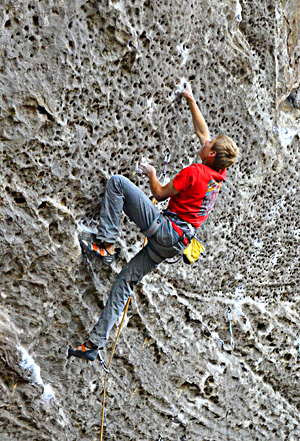
A young Alex Megos crushing at the Dark Side, Red River Gorge. Hörst photo.
Maximum climbing isn’t the same as training yourself into the ground. It’s more about what you can leave behind than add to your plate. Learn how to train optimally at every level of climbing and unload the constraints holding you back.
(This article was originally published in January of 2019).
The road to maximum climbing—whether you define that as realizing your climbing potential or optimizing your climbing experience—isn’t an easy one. There are no short cuts to putting in the time and discipline required. But more isn’t always better either. The “train-till-you-drop” approach will not lead you to the promised land of your goals.
Optimal Training for Climbers
Here’s where the old quality-versus-quantity argument comes in. Optimal training is rarely about doing more training in general, but a matter of doing more of the right kinds of training.
For a beginning climber, the right kind of training is usually pretty simple: climb on a regular basis in order to build up a solid bases of climbing skills, both technical and mental. For the intermediate climber, however, the right kind of training must combine frequent, challenging climbing with supplemental work as well. At the elite level, optimal training becomes a much more complex endeavor of identifying and eliminating subtle performance constraints in each area of the performance triad (mental, technical, and physical).
Unload Your Constraints
This ultimate stage of the journey toward maximum climbing is mostly about stripping away the things that are holding you back. This involves eliminating technical inefficiencies, disengaging from distractions, overcoming fears, breaking counterproductive habits, eliminating the pressure to perform, reducing time wasted on low-value activities, and constantly refining your training to get the most out of every minute you spend in the gym. This is one strategy that the very best climbers in the world keep in their toolbox of superpowers.
If you think I’m promoting intense pragmatism as a virtue here, then you’d be correct. What you think and do, each day of your life, changes both who you are in the present and who you will become in the future. Forgoing pragmatism would be a form of self-sabotage. (Learn how Margo Hayes does this.)
It all comes down to practicality. What works? What doesn’t work? What could work, if you gave it a proper chance? You must assume the mindset of a sculptor whose work of art is never completed. Every day holds opportunities to refine and improve how you show up as a unique individual.
Who Are You?
Behind every step of this refinement process is the willingness to learn about yourself. What works for someone else won’t necessarily work for you, and vice versa. The same goes with what constrains you. Success is personal; it depends on what strengths you bring to the table and what weaknesses hold you back.
Spend time documenting your specific strengths and weaknesses as a climber. If you aren’t sure where to start, set a timer for three minutes. Give yourself that time to write down whatever comes to your mind first in each category. Don’t worry about what you write down at first; you can always edit things later. For now, focus on getting your immediate thoughts down on paper.
From there, take a look at the strengths and weaknesses you’ve pinpointed. Assess each of them for accuracy based on your personal climbing experience. Are these all true in the right here and now? Separate past, present, and future into separate lists. How do your past strengths and weaknesses compare to those of the present? How would you like for them to look in the future compared to now? What is essential to your performance, and what can take a back seat?
This is a mindful process, but also a sort of secret internal journey that plumbs the depths of your being and explores the unknown. You can build a vision of your potential as a climber and plot a path to get there based on these strengths and weaknesses. They’ll ebb and flow over time, too. One of the many beauties of climbing for life is that wisdom, efficiency, and a more thoughtful approach to climbing come with the years. Time makes the process even more sacred, gratifying, and profound.
Want more? Your journey toward maximum climbing is ultimately self-directed, but it’s possible to accelerate the progress by leaning on the experience of others. Take it further with the full maximum climbing program.
Related Articles:
- 10 Tips for Pursuing Maximum Climbing Performance
- Self-Discipline & Commitment: The Great Equalizers
- 5 Strategies to Sharpen Your Concentration and Climb Better
Copyright © 2000–2023 Eric J. Hörst | All Rights Reserved.

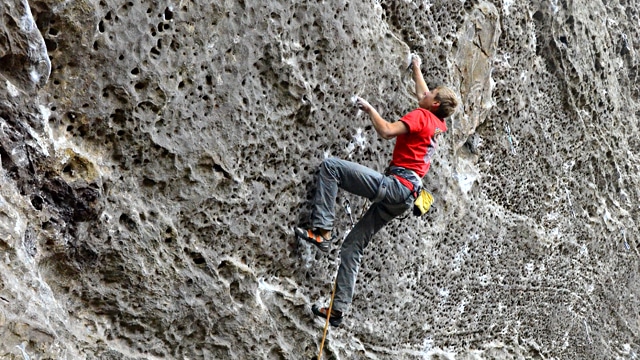
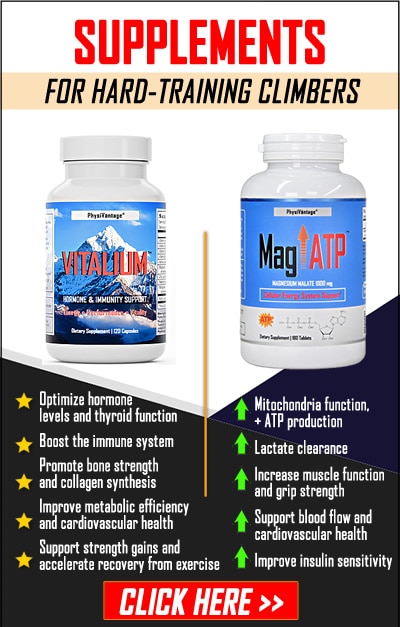
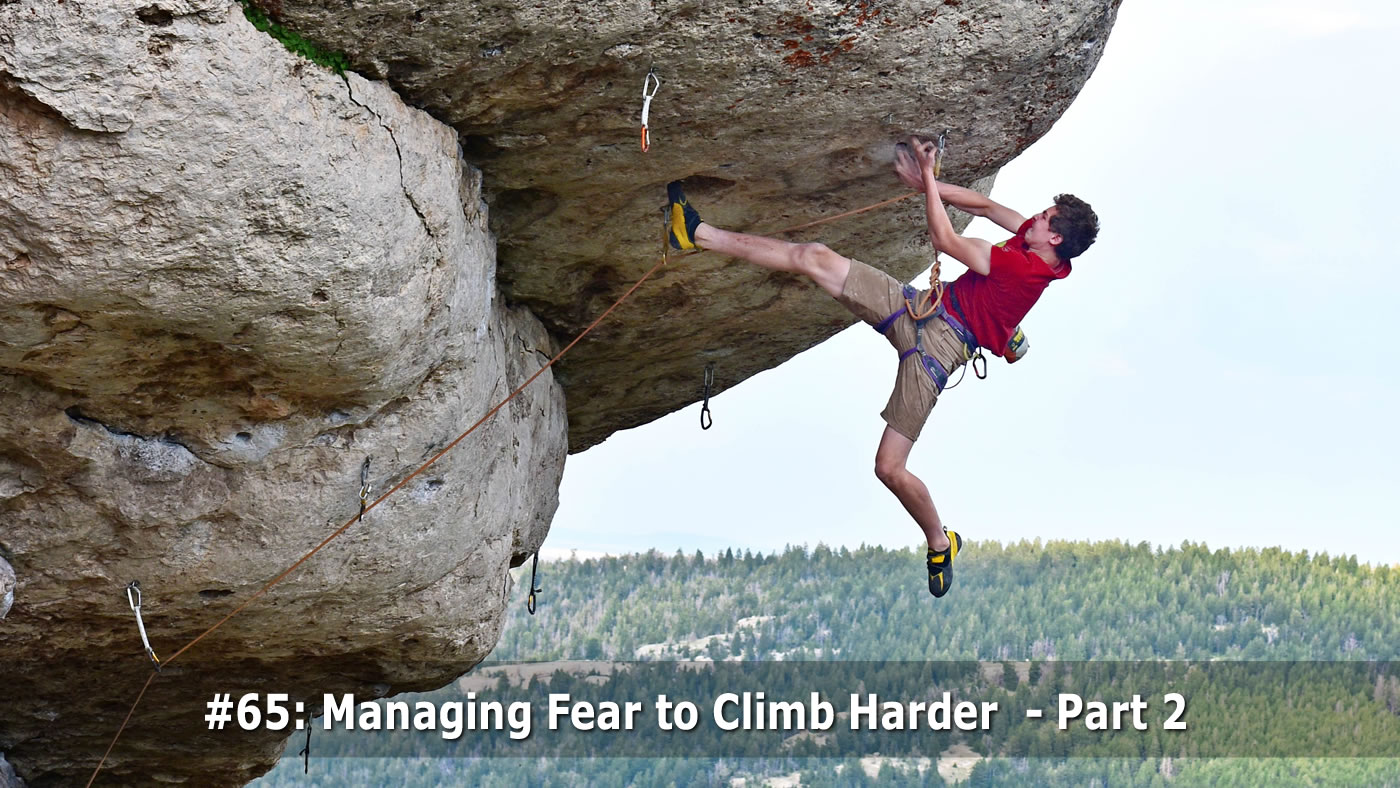
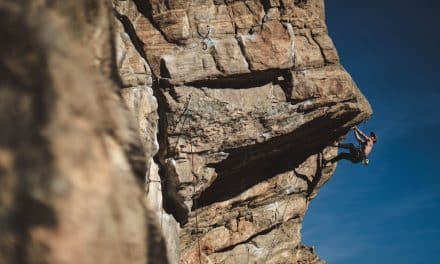
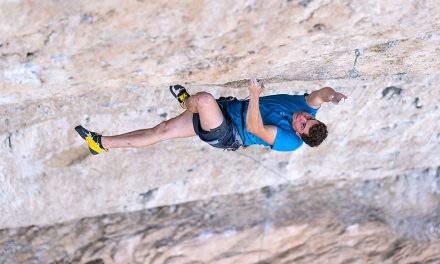
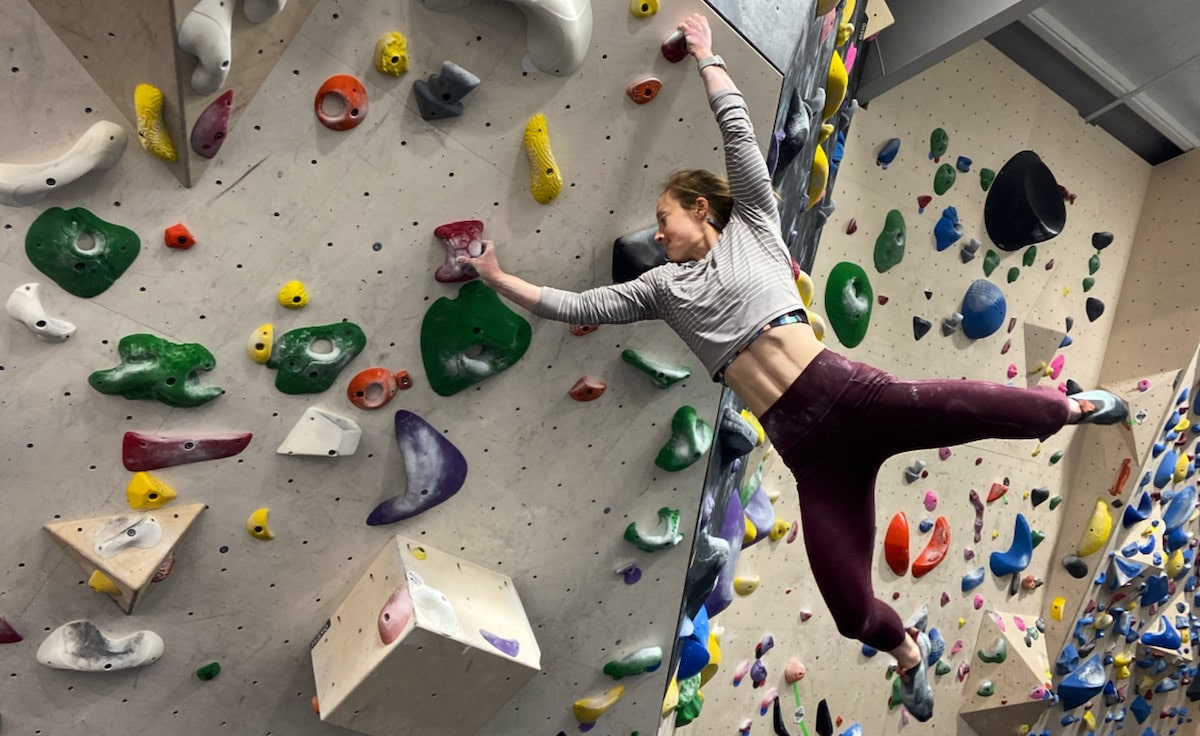

![🚨New Training For Climbing podcast drop! [**Link in bio.**]
This a two-part deep dive into designing a comprehensive, long-term systems approach to training. Coach @eric_horst unpacks—in rich detail—how systems actually function, and he highlights how transformative climbers throughout history “shake up the box” with innovative, highly effective methods to achieve big goals and push the boundaries of our sport.
In Part 1 (#122), Eric blends a concise climbing history lesson with an engineer-like breakdown of how intelligent systems operate. Part 2 (#123) of this series will deliver the actionable strategies you can use to build a personalized, high-performance training system for this winter…and for many seasons to come.
Eric emphasizes that as climbers progress beyond the beginner stage, climbing and training grow increasingly complex—requiring intentional, organized, and year-round development of strength, technique, mental skills, recovery habits, nutrition, and lifestyle management. Rather than ad-lib sessions or singular-focus programs (like only training strength), climbers need a comprehensive system fine-tuned daily and seasonally.
This is an entertaining and thought-provoking episode—so lean in, listen closely, and get ready to feel inspired, challenged, and equipped to level-up your modus operandi at the crag, in the gym, at home, and in everything you do! Listen on Apple Podcasts, Spotify, or online using the web player below.
#climbingtraining #bouldering #indoorclimbing #climbing #climbingpodcast #erichorst #trainingforclimbing @lasportivana @physivantage](https://trainingforclimbing.com/wp-content/plugins/instagram-feed/img/placeholder.png)


